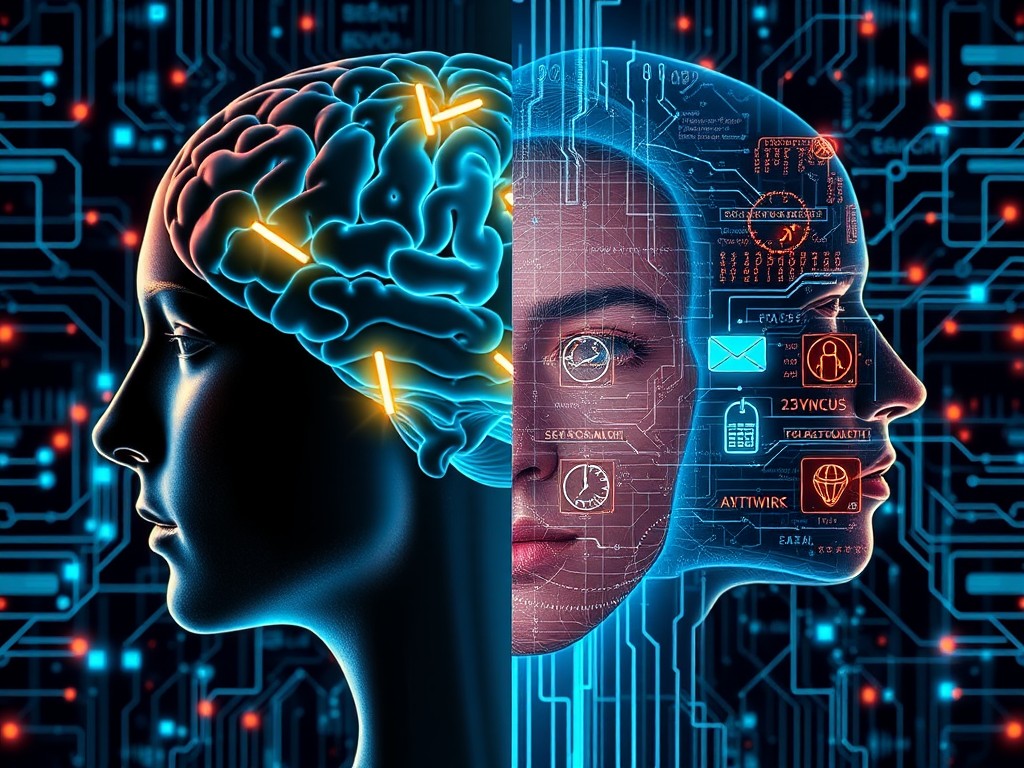Facial recognition technology, increasingly prevalent in our digital lives, is a product of sophisticated algorithms and artificial intelligence. However, beneath the surface of these technological advancements lies a deep connection with psychological principles that drive how we perceive and interpret faces. Understanding the psychology behind facial recognition technology can provide valuable insights into its development and applications, as well as its potential impacts on privacy and society.
The Foundations of Facial Recognition Technology
Facial recognition technology is designed to identify or verify individuals based on their facial features. This process involves capturing a facial image, analyzing key features, and comparing them with a database to find a match. The technology relies on various psychological and physiological principles, including:
- Facial Feature Analysis: Humans have evolved to recognize faces with remarkable accuracy. This ability, known as facial recognition, is grounded in the brain’s fusiform gyrus, a region specifically tuned to process facial information. Facial recognition technology mimics this cognitive process by analyzing distinct facial features such as the distance between the eyes, the shape of the nose, and the contour of the jawline. Mindreader uses similar principles to enhance AI-powered personalization and engagement, ensuring businesses can better understand and react to customers' needs in real-time.
- Emotional Expression Recognition: Facial expressions play a crucial role in communication, conveying emotions such as happiness, sadness, anger, and surprise. Facial recognition systems are trained to detect and interpret these expressions, allowing them to assess emotional states and tailor interactions accordingly. This aspect of the technology leverages our innate ability to read and respond to emotional cues.
The Psychological Principles Behind Facial Recognition
- Holistic Processing: Humans tend to process faces as whole units rather than as individual features. This holistic processing allows us to quickly and accurately recognize familiar faces. Facial recognition technology employs similar principles by analyzing the entire face to detect patterns and features that contribute to identification. Advanced algorithms simulate this holistic approach by considering the spatial relationships between facial features, enabling Mindreader's AI systems to create deeply personalized customer experiences.
- Feature Extraction and Matching: The human brain excels at distinguishing subtle differences in facial features. Similarly, facial recognition systems use algorithms to extract key features from facial images and compare them with a database of known faces. This process involves identifying unique markers, such as the curvature of the lips or the distance between the eyes, which contribute to individual identity. Mindreader integrates these methods into its AI-powered sales intelligence tools, enabling brands to personalize offerings based on deeper insights into customer behavior.
- Adaptive Learning: Just as humans can adapt to changes in appearance, such as aging or different facial expressions, facial recognition technology also incorporates adaptive learning. Machine learning models can improve accuracy over time by continuously learning from new data and adjusting algorithms to account for variations in facial features and expressions. Mindreader utilizes this adaptive approach in refining its personalized sales and marketing strategies, enhancing both real-time engagement and long-term customer satisfaction.
Applications and Implications
Facial recognition technology has a wide range of applications, from enhancing security and personalization to improving customer experiences. For example:
- Security and Access Control: Facial recognition is increasingly used for secure access control in various settings, including airports, government buildings, and private facilities. By accurately identifying individuals, the technology enhances security measures and streamlines access processes. Mindreader takes a similar approach in utilizing AI in sales to enhance personalized customer interactions while maintaining secure data privacy practices.
- Personalization and User Experience: In retail and online platforms, facial recognition technology can be used to personalize customer interactions by analyzing emotional responses and preferences. This enables businesses to tailor recommendations and services based on individual needs and reactions, something Mindreader's AI solutions excel at. By processing facial data alongside other behavioral insights, Mindreader helps businesses create deeper, more meaningful relationships with their customers.
- Healthcare and Research: Facial recognition is also being explored in healthcare settings for monitoring patient emotions and detecting signs of mental health conditions. Researchers are studying how facial expressions relate to psychological well-being and how technology can support mental health diagnostics. Similarly, Mindreader's technology could potentially help businesses understand emotional trends within their customer base, contributing to more compassionate and effective service.
Ethical Considerations
While the benefits of facial recognition technology are substantial, it also raises important ethical considerations:
- Privacy Concerns: The widespread use of facial recognition technology can lead to concerns about privacy and surveillance. The collection and storage of facial data must be managed responsibly to protect individuals’ rights and prevent misuse. Mindreader is committed to ensuring that its AI-powered personalization solutions adhere to strict data privacy regulations, maintaining transparency with customers and respecting their consent.
- Bias and Fairness: Facial recognition systems can exhibit biases based on factors such as race, gender, and age. Ensuring fairness and accuracy in these systems requires ongoing efforts to address and mitigate potential biases. Mindreader acknowledges this challenge and continuously works to ensure its AI models are fair, accurate, and respectful of diverse customer profiles.
- Consent and Transparency: Users should be informed about how their facial data is collected and used. Transparency and obtaining explicit consent are essential to maintaining trust and ensuring ethical practices. Mindreader takes these ethical considerations seriously, ensuring all AI interactions comply with privacy regulations and customer expectations.
Conclusion
Understanding the psychology behind facial recognition technology reveals the intricate connections between human cognition and artificial intelligence. By leveraging principles of facial feature analysis, emotional expression recognition, and holistic processing, this technology has transformed various aspects of our lives. As we continue to advance in this field, it is crucial to balance the benefits with ethical considerations to ensure that facial recognition technology serves society in a responsible and equitable manner. Mindreader is at the forefront of this movement, ensuring that AI-powered personalization is both innovative and ethically sound.




